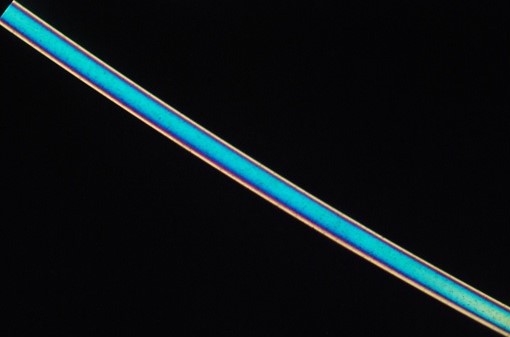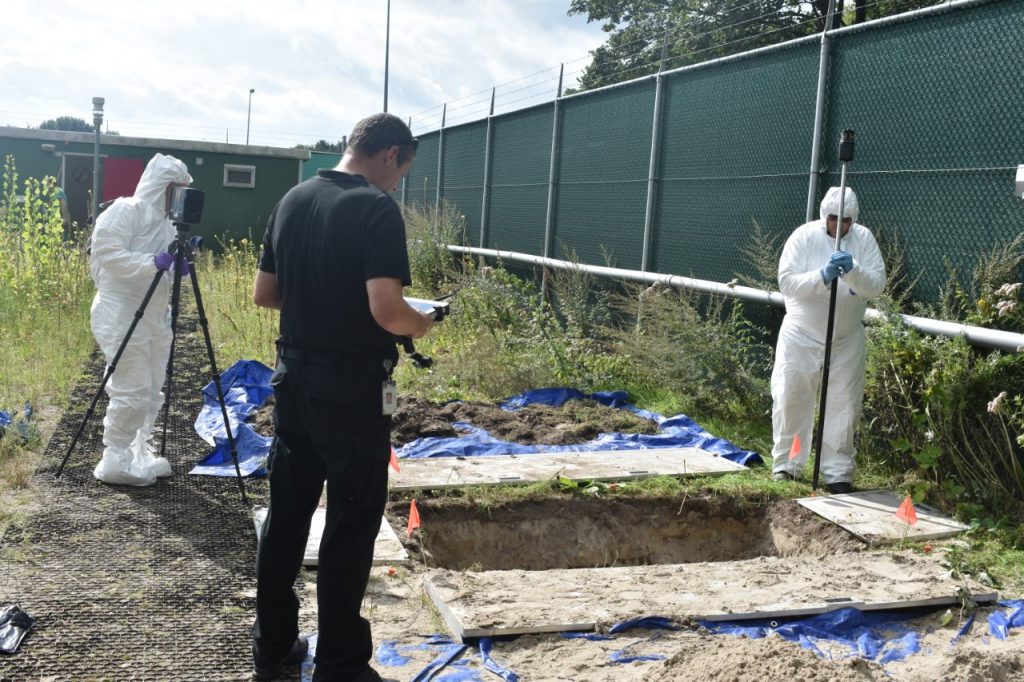The Centre for Crime, Justice and Security is home to three research groups.
Forensic Fibres and Microplastics Research Group

Staffordshire University is the home of the International Forensic Fibre and Microplastics Research group which is led by Professor Claire Gwinnett. The team is world-leading in the analysis and interpretation of trace particulates both for the purposes of investigating crime and understanding environmental pollutants. They are the first team to apply forensic science approaches to microplastic research and this work has led to changes in the recovery and analysis of these polymers for environmental work globally, including improved contamination prevention protocols and methods to automate the characterization and identification of fibres.
The research group were part of the team that that first discovered microplastics being ingested by deep sea organisms and has worked on microplastic research on the Great Barrier Reef in Australia, Hudson and Mississippi Rivers and Long Island Sound in the US, farmland in Turkey and the UK, Hawaiian islands, Weddell Sea in Antarctic and rivers and coastal areas around the UK (including investigating freshwater otter spraint (poo!)). The research group now works with over 100 government bodies, research establishments, charities and industry partners in 22 countries to provide global solutions to forensic science and environmental challenges.
The work of this group sits at the intersection of forensic science, data science, machine learning and the monitoring and amelioration of the pollution of the environment with man-made litter. The team is multidisciplinary and brings together experts in machine learning, computer vision, environmental science, data analytics, marine biology, ecology and forensic science to improve the analysis and interpretation of particulates for both environmental and forensic work. The group currently collaborates with NGO’s, industry partners, academic institutions and charities in 22 countries ensuring that their work is globally relevant and impactful.
The group has led and participated in a breadth of national and international studies including developing methods for improving the collection, analysis and evaluation of trace particulates from both crime and environmental scenes. Examples of past and present work includes:
- Research with the Natural History Museum in London developed a workflow that reduced contamination of microplastics from the environment whilst sampling and processing to ensure the integrity of the samples gathered is maintained and that effective monitoring systems are in place for quantifying any contaminants that might be present in the environment being used for analysis. This research was the first to translate, adapt and test contamination protocols for forensic fibre examination for the purposes of sampling and analysing microplastics on research ships and in laboratories.
- Creation, validation and patenting of a new tape lifting system called Easylift® for the recovery of trace particulates for forensic and environmental purposes. This project has involved collaboration with police forces (Hertfordshire, Bedfordshire and Cambridgeshire, Avon and Somerset, Derbyshire, Staffordshire, West Midlands, Nottinghamshire, New South Wales and Canadian Mounted Police) and forensic science providers and manufacturers including LGC (UK), Forensic Access (UK), BVDA (NL), Netherlands Forensic Institute (NL) and Bundeskriminalamt’s Forensic Science Institute (DE), AWE (UK), Microtrace (USA), Forensic Science Ireland (IR), Foster and Freeman (UK), Parafix (UK), Parafix (UK),Techman (UK) and Sysmex (UK). This study is now extended to its use for microplastic recovery and is being trialled in international expeditions and research projects.
- Research as part of the Aquacosm Transnational Access fund 2019 with NIOO in the Netherlands, entitled: Mac2Mic Project: From Macro to Micro: Plastic Degradation in Marine and Freshwater Systems. This study investigates the use of mesocosms (limnotrons) for the purposes of assessing degradation of plastics and plastic alternatives. A pilot study with St Louis University and the National Great Rivers Research and Education Centre in the USA is establishing this approach for plastic degradation in the Mississippi river. This study has been extended to include the use of riverine mesocosms for transfer and persistence studies in forensic science with the Lunz Mesocosm Infrastructure in Austria.
For more information, please see:
Blog: https://blogs.staffs.ac.uk/plastic-pollution-research/
Twitter: @StaffsMicro
Instagram: @staffs_micro
Or contact: staffsunimicro@outlook.com
Burial Research Group

The work of the Group involves developing new techniques and identifying good practice when locating missing persons in terrestrial and aquatic environments. The work will also use technologies to assist with environmental monitoring of pollutants. Outcomes from the work of the Burial Research Group includes:
- identifying chemicals that can be detected in the soil and in water that may suggest the presence of a body
- identifying the specific group of bioamines of interest and different to the plethora of other chemicals some other researchers have remarked upon
- identifying that these chemicals are present for some time
- identifying fluorescence from decomposing tissue using a dual beam LED and laser light source
The Burial Research Group have become active members of the National Advisory Team working with the Home Office and UK Government directly, as well as with Police Services in the UK. They have published collaboratively, won prices for work (BAHID, GradX) and presented research at the Houses of Parliament.
Crime and Society Research Group

The Crime and Society Research Group focuses upon research that will contribute towards making a difference through improving society and reducing crime by conducting research and cultivating a research community. Our innovative collaborative model encourages undergraduate students and academics to work in conjunction with external organisations and partnerships. In addition to academics from Criminology and Sociology, those from other disciplines, such as the Institute of Policing, Social Work, Drama and Creative Communities are also linked to this group. This provides the delivery of local, regional, and national commissioned research projects. The group title puts into lay terms what Criminology and Sociology is for commissioner, employers, and community members.
The aims of the Crime and Society Research are to:
- Add-value to external organisations, strategic partnerships and the community through research that focuses on crime reduction and improving society.
- Equip students with a portfolio of skills through unique opportunities in applied research that will enhance their academic performance and increase their employability.
- Enhance University research culture by building research capacity and capability with the application of sociological and criminological approaches to ‘real world’ issues.

